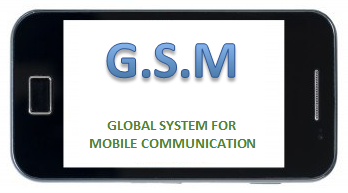GSM Technology
GSM History
GSM is used by over 800 million people is more than 190 countries.

In the early 1980, Europe had a number of mobile phone systems with almost similar standards with slightly different carrier frequencies. These mobile phone systems are considered to be fire generation.
GSM (Global system for mobile communication) was found in 1982 that was fully a digital system. It can be considered second generation system.
The whole development process of GSM technology was transferred to 3 GPP (third generation partnership project) and further developments are combined with 3 G development.
GSM Technology
The initial goal of GSM technology was to provide a mobile phone that allows users to roam throughout Europe and to provide voice services compatible to ISDM systems.
There are a number of versions of GSM such as GSM 900.
* DCS 1800 (Digital cellular system)
* PCS 1900 (Personal communication services)
* GSM 400
* GSM Rail
The GSM 900 uses 890 to 915 MHz for uplink and 1805 to 1880 MHz downlink.
The PCS - 1900 uses 1850 to 1910 MHz uplink and 1930 to 1990 MHz downlink. It was used in US.
The DCS 1800 uses 1710 to 1785 MHz uplink and 1805 to 1880 MHz downlink.
The GSM 400 uses either 450.4 to 457.6 MHz or 478.8 to 486 MHz for uplinks and either 460.4 to 467.6 or 488.8 to 496 MHz for downlinks.
GSM-E was introduced in Europe to be used in Rails. It provides a number of features that are not provided by the normal GSM such as
1. Emergency calls with acknowledge.
2. VGCS (Voice group call service)
3. VBS (Voice broadcast service)
Average Acceleration Calculator
Average acceleration is the object's change in speed for a specific given time period. ...
When an object falls into the ground due to planet's own gravitational force is known a...
In Mathematics, the permutation can be explained as the arrangement of objects in a particular order. It is an ordered...
A rectangle can be explained as a 4-sided quadrilateral which contains equal opposite sides. In a rectangle
A three sided polygon which has three vertices and three angles is called a triangle. Equilateral triangle...






